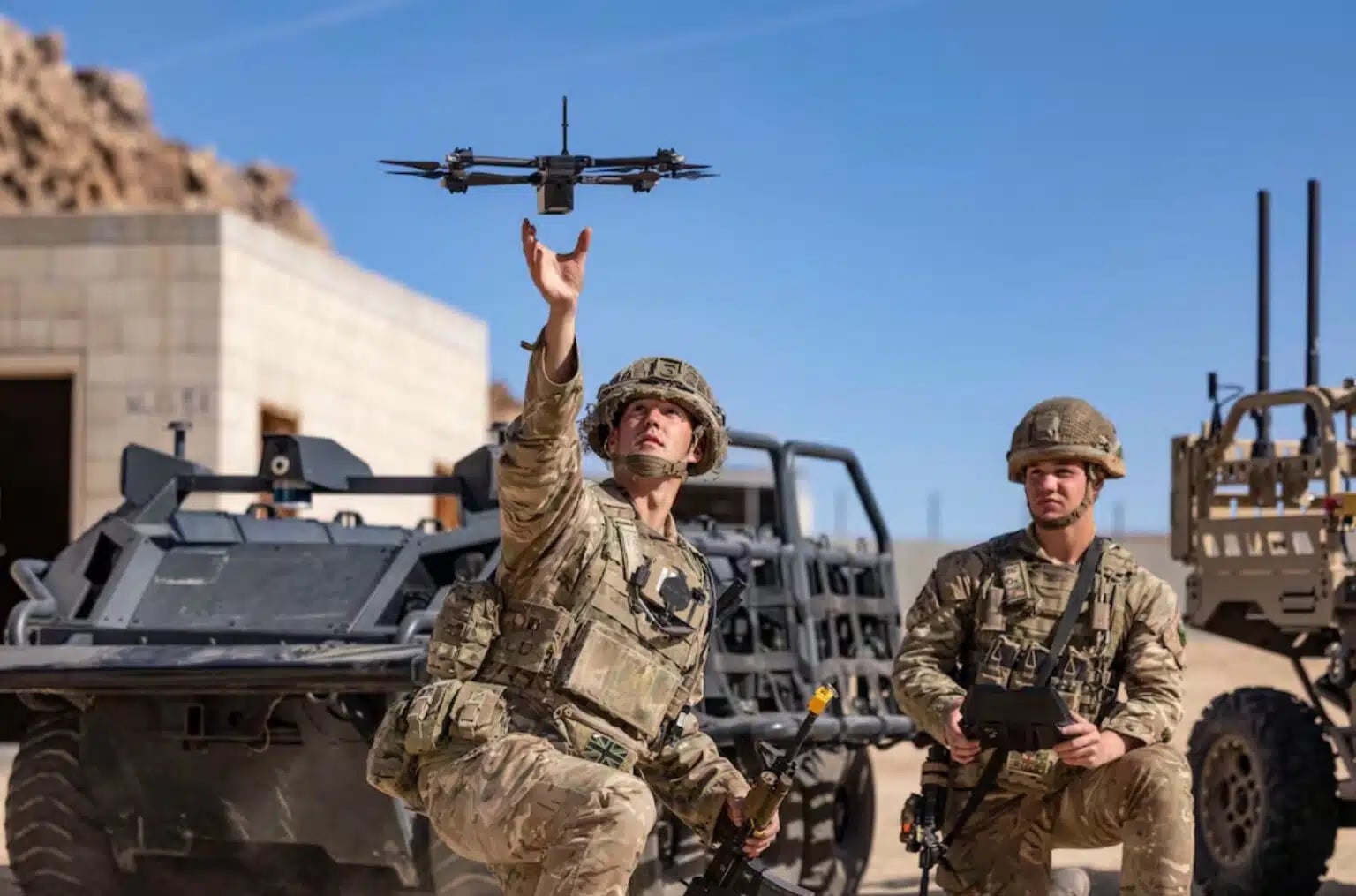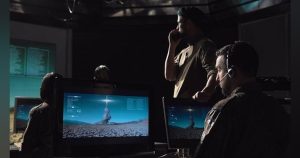Could U.S. Foreign-Aid Drones and Dollars Be Empowering Terrorists?
A Deep Dive into Drone Aid for Ukraine and Wider National Security Risks
Opening the Black Box: Foreign Aid, Drones, and National Security Fears
In today’s world, drones are as integral to modern warfare as viral dances are to social media platforms like TikTok. U.S. foreign aid efforts, particularly those featuring advanced technologies, often ignite heated discussions. Recently, the United States Agency for International Development (USAID) coordinated the donation of nine Skydio 2+ autonomous drones to Ukraine. This move prompts critical questions: Are these drones effectively promoting justice and peace, or do they risk empowering terrorist factions?
Let’s delve into the details, challenge the narratives, and assess the true risks and benefits of America’s drone diplomacy.
What’s Actually Happening: Drones for Justice, not Combat
USAID’s Drones in Ukraine: The Core Mission
- Primary Purpose: These Skydio drones are not combat-oriented UAVs. Outfitted with high-resolution 4K cameras, they specifically aim to document evidence of war crimes and human rights violations in Ukraine.
- Recipients: The Office of the Prosecutor General of Ukraine is the key beneficiary, utilizing these drones to gather photo and video proof of damaged civilian infrastructure and alleged atrocities. More than 115,000 cases have been under review since Russia’s comprehensive invasion began.
“The Skydio 2+ drones have 4K cameras that will be used to take photo and video content to document war crimes. These will aid the Office of the Prosecutor General to document the more than 115,000 instances of destroyed civilian infrastructure and evidence of human rights abuses on frontline communities and liberated territories.”
Impact: So far, these drones have been vital in gathering evidence from over 80 shelling sites and 100 damaged structures. They produce detailed 3D models to assist in international prosecution efforts.
U.S. Drone Aid: Supporting, Not Creating, Security Threats
Control, Training, and Oversight
- Skydio drones supplied by USAID are accompanied by comprehensive training and technical support. Their manufacturing and quality control are thoroughly managed within the United States.
- USAID works closely with Ukrainian authorities and human rights organizations, carrying out joint missions to gather evidence. The foreign aid is strictly monitored, minimizing the risk of diversion to unauthorized entities.
But What About the Risks? Could Such Drones Empower Terrorists?
Reviewing the Concerns:
- Diversion or Capture: Any sophisticated technology introduced in a conflict zone bears some risk of being diverted or captured by adversarial forces or non-state actors like terrorists or criminal groups.
- Dual-Use Problem: Many drones can potentially be weaponized or repurposed for surveillance, smuggling, or related activities by ill-intentioned parties.
Weighing the Realities:
- Skydio 2+ Focus: These drones are optimized for autonomous navigation, 3D mapping, and videography—not for delivering payloads or acting as weapons. Their use by insurgents or terrorists is limited compared to military attack drones.
- Secure Supply Chain: Skydio prioritizes supply-chain security and maintains high standards for hardware and software, serving as a significant obstacle to tampering or illicit repurposing.
- Ukrainian Context: The Ukrainian government tightly manages donated equipment like Skydio drones. Reports have confirmed their use in official war crimes documentation efforts, rather than in frontline combat or as tools for governmental overthrow.
The Broader Picture: U.S. Foreign Aid, Drones, and Adversarial Innovation
For every technological edge, there’s a game of cat-and-mouse.
- Electronic Warfare: Both Russian and Ukrainian forces heavily employ drones, prompting swift advancements in offense and electronic countermeasures. Drones donated for humanitarian or documentation tasks are less likely—though not immune—to become ensnared in these arms races.
- Private Sector Partnerships: USAID’s collaboration with companies like Skydio and other American firms, such as Starlink for communications, exemplifies a strategic blend of U.S. industrial proficiency, technology, and “soft power” for global strategic gains.
- “Army of Drones” vs Legal Drones: While Ukraine develops military UAVs for reconnaissance and attack, the Skydio drones provided through USAID are strictly allocated for legal, documentation, and humanitarian use.
Transparency, Security, and Accountability: Are the Safeguards Enough?
Oversight Measures At-A-Glance:
| Safeguard | Example Implementation | Effectiveness |
|---|---|---|
| Direct recipient control | Only Ukrainian Prosecutor’s Office receives the drones | High against diversion |
| Focused mission/training | Training for legal documentation, not weaponization | High |
| Coordination with int’l partners | Work with human rights NGOs and Ombudsman | High for accountability |
| Hardware/security features | U.S.-controlled supply chain, tamper alert systems | Medium-High |
| Post-donation monitoring | Regular follow-ups, usage reports | High |
No defense is foolproof. In conflict zones, the possibility of zero diversion risk is unreal; however, USAID and its partners take extensive steps to minimize the chances of misuse.
Real-World Example: “Game of Drones” in Ukraine
Here’s a real-life story to illustrate the matter. Consider an investigator from the Ukrainian Office of the Prosecutor General, whom we’ll call Olga. Before having Skydio drones, Olga and her team endured perilous, exhaustive trips to devastated towns, navigating mines and sniper threats just to document the destruction. Now, with a Skydio 2+, she flies above ruined streets, capturing high-definition footage and constructing 3D reconstructions within hours rather than days. The outcome? Testimonies are corroborated by irrefutable digital evidence, bringing war crime prosecution into the 21st century.
The Hard Truth: Drones as a Force for Good—With Eyes Wide Open
Could U.S. foreign-aid drones be misused by terrorists under worst-case circumstances? The answer is yes, but the risk is minor, managed, and outweighed by the humanitarian and legal advantages already observed.
The Skydio/USAID drone initiative in Ukraine is a testament to cautious aid, integrating state-of-the-art technology with stringent oversight, explicit mission boundaries, and public accountability.
- Drones assist in documenting war crimes, salvaging evidence from devastation rather than delivering arms to extremists.
- Any dual-use technology presents real, ongoing risks, but donor agencies are vigilant: they design programs with layers of protection, responsibility, and continuous real-world evaluations.
As a member of the Skydio team quipped:
“We don’t just build drones—we construct digital truth. The only thing weaponized here is justice.”
Takeaways for Policymakers, Advocates, and Concerned Citizens
- Demand transparency: Each foreign-aid drone initiative should disclose its objectives, partner network, training methodologies, and post-delivery assessments.
- Back thorough recipient vetting: Ensure dependable end-use monitoring.
- Welcome the positives: When humanitarian, legal, and reconstruction missions gain momentum, global observers and supporters often rally behind them.
The bottom line: U.S. drone aid in Ukraine, executed through USAID and Skydio, exemplifies how to navigate the thin line between innovation and risk—with the balance presently leaning towards supporting justice, not fueling terror.
Extra Reading & Trust-Builders
- Looking to explore further? Check the role of technology in international criminal justice at the International Criminal Court, or peruse official statements from Skydio and USAID for the latest statistics and case reports.
- Watch drone deployment in action in this YouTube explanatory video, showcasing U.S. manufacturing and partner dedication.
- To understand the distinctions between military and civilian drone use, see “Drone” (2017), a documentary that probes beyond the headlines.
- Or revisit the dramatic drone “swarm” sequence in Spider-Man: Far From Home—a reminder that in both cinema and geopolitics, the impact of drones depends on their operators.
Have remaining questions? Our team is dedicated to monitoring the latest in drone policy, security, and humanitarian technology—because in today’s world, the skies truly represent both the frontier and the battleground.













